
26 Jul Newsletter- July 26, 2025
Contents
 FROM EXTORTION TO WASHINGTON’S APPOINTMENT
FROM EXTORTION TO WASHINGTON’S APPOINTMENT
My 5th Great Grandfather, Joseph Greenway, was baptized on August 4, 1756. He was taxed as a cooper in 1774. He was commissioned as an Ensign on January 20, 1776, for the 1st Pennsylvania battalion, Continental Line. Later that August, he was commissioned as a 3rd lieutenant to serve on the Frigate “Delaware”. In July 1777, he, along with 11 other Lieutenants, were dismissed from the Navy for attempting to extort higher pay and allowances. Before action was taken, the “Delaware” was captured, and the British in Philadelphia imprisoned him along with the rest of the crew.
After being released, He served as the Captain of the Maryland Brigantine “Virginia” in 1780. This was a privately owned vessel used during the revolution to patrol, run blockades, or raid merchant ships. The ship carried a crew of 24 and operated eight carriage guns and 24 swivels.
In 1783, he purchased two lots between Royal and Fairfax on Princess St. in Alexandria, Virginia, from Robert Lyle. As of 1784, he owned a wholesale and retail store, “specializing in dry goods, duffels, Welch plains, hunter’s friezes, superfine broadcloth, calicoes, cotton handkerchiefs, beaver and felt hats, and other items.” In 1792, he operated a boarding house on Fairfax Street, “late the dwelling of Dr. Ramsay, next door to Wm. Herbert’s late dwelling house.”
Joseph married around 1784, Rebecca Harper, the daughter of Captain John Harper of the last edition. Captain John Harper In 1784, he was saved from the wreck of his ship “Sampson” off the coast of Dunkirk.
In 1785, Lyle purchased the lots back. In 1787, for 112 pounds, he bought a lot from James Halliday in Alexandria at the corner of Wolfe and Allison’s Alley. In 1785, he was also appointed a Captain in the Philadelphia Militia.
In 1786, he petitioned the Virginia General Assembly. In 1787, he also purchased a parcel at the corner of Wolfe and Fairfax.
As of August 22, 1789, he served as harbor and ballast master in Alexandria
As of 1790, they lived on the northwest corner of Prince and Fairfax, where Joseph was a storekeeper. On September 15, 1790, he applied for an appointment to command a revenue cutter as shown below.
To George Washington from Joseph Greenway, 15 September 1790
Sir,
I have the Honor to inform you that I bore a Lieutenant’s Commission in the Navy of the United States during the late War and was made prisoner in the Delaware Frigate. That after some time I made my escape from the Enemy; and having obtained a furlough from Congress until called for, engaged in the Merchants Service, where I continued the remainder of the War, and sometime after the Peace took place—Since I left that service, I have been employed by the public and have, I rely, conducted myself with propriety. That having lately observed the Collection Law of Congress directs a number of Cutters to be built for the use of the united States, I have to solicit your favor for the Command of one, to be stationed in this River and bay and respecting my Character and deportment, you will be informed by the underwritten certificate.1 I am Sir with the utmost respect, Your most Obedient Humble Servant
Joseph Greenway
He was a member of the Alexandria Mason’s Lodge, serving as Secretary from June 24, 1788, till December 1790. Late in 1786 and 1787, Greenway served as Junior Warden of the Lodge but never went on to become Master. Greenway was an active member and attended the funeral lodge of Washington. On 15 Apr 1791, his Alexandria lodge ceremonially placed the first cornerstone marking the District of Columbia. Two years later, he was also present at the laying of the cornerstone of the U.S. Capitol in Washington (President Washington joined them in barbecuing a 500-pound ox afterward).
He died before December of 1793 when his will was probated. Rebecca lived as of 1797 in a home that is still standing today at 514 S. Fairfax in Alexandria. Mrs. Marion Young, whom I visited in 1996, owned the house at the time (drawn above). Rebecca died on March 10, 1797, at the age of 37, in Alexandria. They were Presbyterian. Her brother Charles Harper raised their children, including their daughter, Mary Patience Greenway, who married John Smither from two editions ago. John Smither
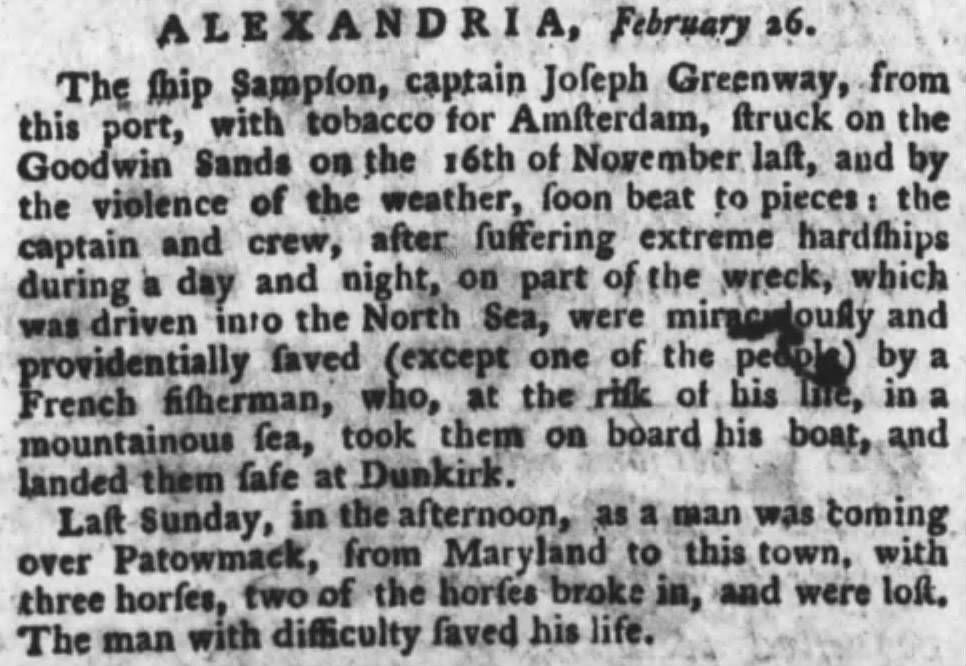
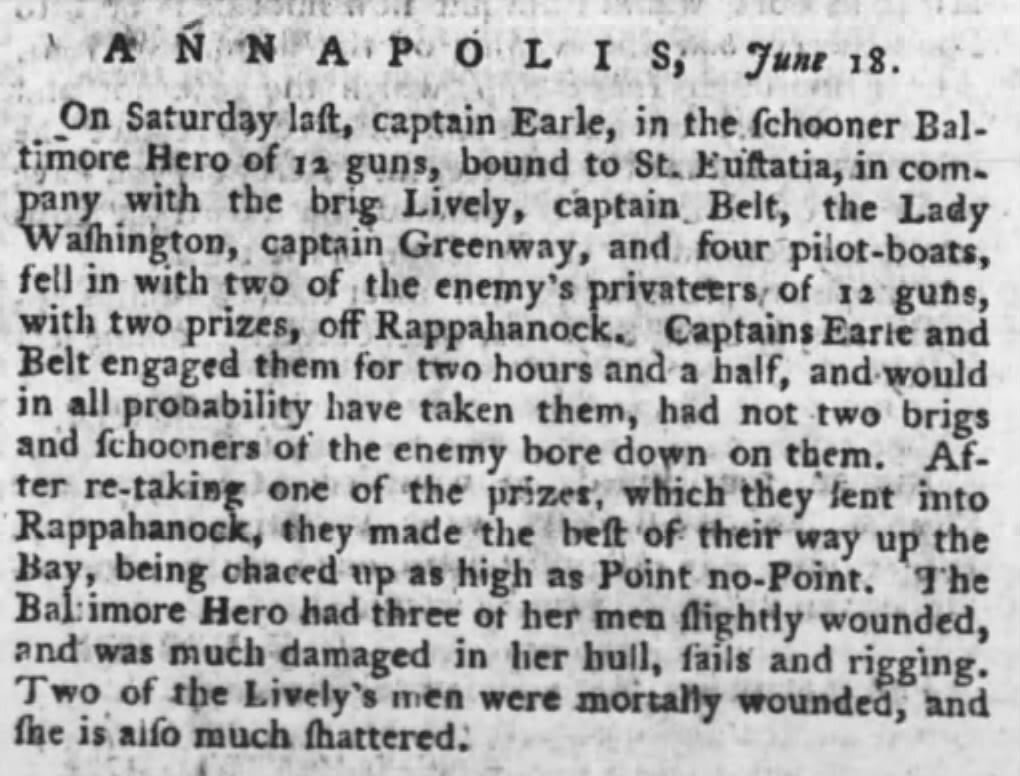
 TEDDY’S VISIT TO AFRICA
TEDDY’S VISIT TO AFRICA
On our recent trip to Africa, specifically Kenya, we visited the National Museum. I came across this picture of the route of Teddy Roosevelt’s hunting trip to Africa.
Many things have changed since the map was made. British East Africa became Kenya, German East Africa became Tanganyika and is today’s Tanzania. Abyssinia is Ethiopia.
Roosevelt’s expedition cost about $2 million dollars in today’s dollars. Half came from the Smithsonian Museum’s appeal, a quarter from Andrew Carnegie, and a quarter from Roosevelt himself.
Here is the list of the game that Roosevelt successfully hunted:
• Lion = 9
• Hyena = 5
• Elephant = 8
• Rhinoceros = 5 (square mouth)
• Rhinoceros = 8 (hook-lipped)
• Hippopotamus = 7
• Warthog = 8
• Zebra (common) = 15
• Zebra (big) = 5
• Giraffe = 7
• Buffalo = 6
• Eland (giant) = 1
• Eland (common) = 5
• Bushbuck =2 (East African)
• Bushbuck = 1 (Ugandan)
• Bushbuck = 3 (Nile)
• Roan = 4
• Oryx = 10
• Wildebeest = 5
• Hartebeest = 10 (Coke’s)
• Hartebeest = 14 (Jackson’s)
• Hartebeest = 1 (Ugandan)
• Hartebeest = 8 (Nilotic)
• Topi = 12
• Waterbuck = 5 (common)
• Waterbuck = 6 (singsing)
• Python = 3
• Kob = 10 (common)
• Kob = 1 (Vaughan’s)
• Kob = 3 (white eared)
• Lechwe = 3 (saddlebacked)
• Redbuck (bohor) = 10
• Buck (Chanler’s) = 3
• Impalla = 7
• Gazelle (Granti) = 5
• Gazelle (Robertsi) = 4
• Gazelle (Notata) = 8
• Gazelle = 11 (Thompson’s)
• Gerenuk = 3
• Klipspringer = 1
• Oribi = 18
• Duiker = 3
• Steinbuck = 4
• Dikdik = 1
• Monkey = 1 (red ground)
• Monkey = 5 (black and white ground)
• Ostrich = 2
• Bustard (Greater) = 4
• Bustard (Lesser) = 1
• Crane (kavirondo) = 2
• Stork (whale head) = 1
• Marabou = 1
• Stork (saddle bill) = 2
• Stork (ibis) = 1
• Pelican = 5
• Guinea fowl = 1
• Crocodile = 1
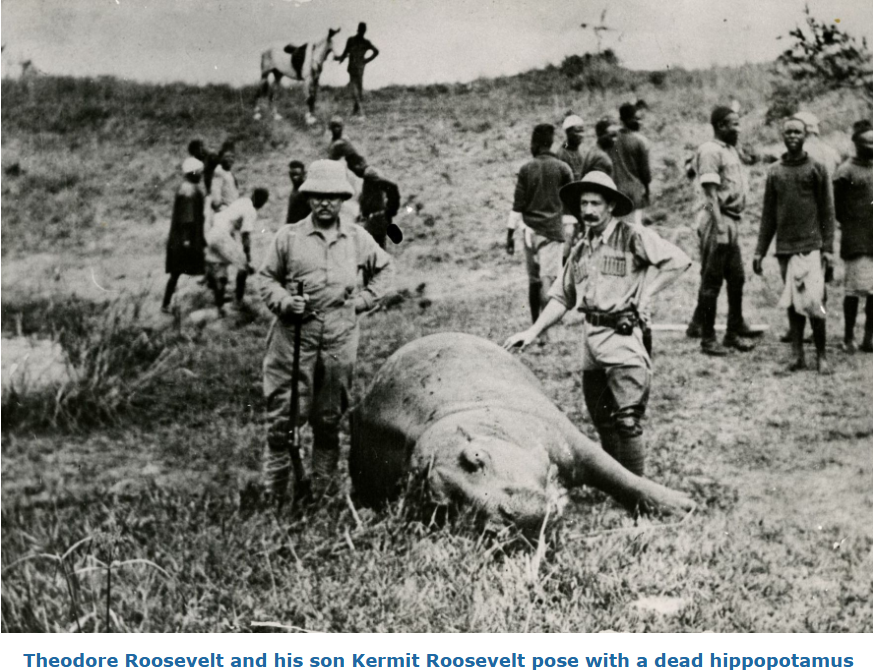
 96 INNOCENTS SLAUGHTERED
96 INNOCENTS SLAUGHTERED
My 5th Great Grandfather William Park served as a Major in the PA Militia. In 1776, he moved to Vance’s Fort in Washington County, Pennsylvania, where he built a home where Cross Creek Village now stands in Jefferson Township and was a founding member of the Cross Creek Church.
In the spring of 1782, at age 64, William was tomahawked; his head split open and scalped by Indians. This occurred shortly after General St. Clair’s defeat against Burgoyne. Judge James Edgar built his coffin. His death, the death of Samuel Robinson, and finally, the death of Mary Grant Wallace, by Indians, led to the eventual slaughter of 96 innocent Moravian Indians.
The Gnadenhutten massacre, also known as the Moravian massacre, was the killing of 96 pacifist Moravian Christian Indians (primarily Lenape and Mohican) by U.S. militiamen from Pennsylvania, under the command of David Williamson, on March 8, 1782, at the Moravian missionary village of Gnadenhutten, Ohio Country, during the American Revolutionary War.
Due to their commitment to Christian pacifism, the Moravians did not take sides during the American Revolutionary War, which caused them to be viewed with suspicion by both the British and the Americans. As the Moravians were collecting crops, Pennsylvania militia encountered them and falsely promised the Moravians that they would be “relocated away from the warring parties.” Once they were gathered together, however, the American militia rounded the unarmed Moravians up and said that they planned to execute them for being spies, charges that the Moravians rebutted.
The Moravians asked their captors to be allowed to pray and worship on the night before their execution; they spent the night before their death praying as well as singing Christian hymns and psalms. Eighteen of the U.S. militiamen were opposed to the killing of the pacifist Moravians, though they were outvoted by those who wanted to murder them; those who opposed the murder did not participate in the massacre and separated themselves from the killers. Before murdering them, the American soldiers “dragged the women and girls out into the snow and systematically raped them.” As they were being killed, the Moravians sang “hymns and spoke words of encouragement and consolation one to another until they were all slain”. Believing in nonresistance, they pleaded for their lives to be spared, but did not fight back against their persecutors.
Moravian missionary David Zeisberger declared the slain Lenape and Mahican as Christian martyrs, who are remembered in the Moravian Church. More than a century later, Theodore Roosevelt called the massacre “a stain on frontier character that the lapse of time cannot wash away.”
The shrine to the Moravian Christian Indian Martyrs includes a monument that was erected and dedicated ninety years after the Gnadenhutten massacre by a Chief of the Christian Munsee tribe; the graves of the victims contain “bones [which] were gathered by the faithful missionaries sometime after the massacre”. It also includes a large Christian cross dedicated to the Moravian Munsee and Christian Mahican Martyrs by a member of the tribe and descendant of one of the slain. With the site of the village being preserved, a reconstructed mission house and cooper’s house were built there (see above).
Below is the Engraving of the Gnadenhutten massacre in 1782, from Henry Howe’s book “Historical Collections of the Great West”. Artwork description: “Massacre of the Christian Indians. – Of the number thus cruelly murdered by the backwoodsmen of the upper Ohio, between fifty and sixty were women and children – some of them innocent babes.”
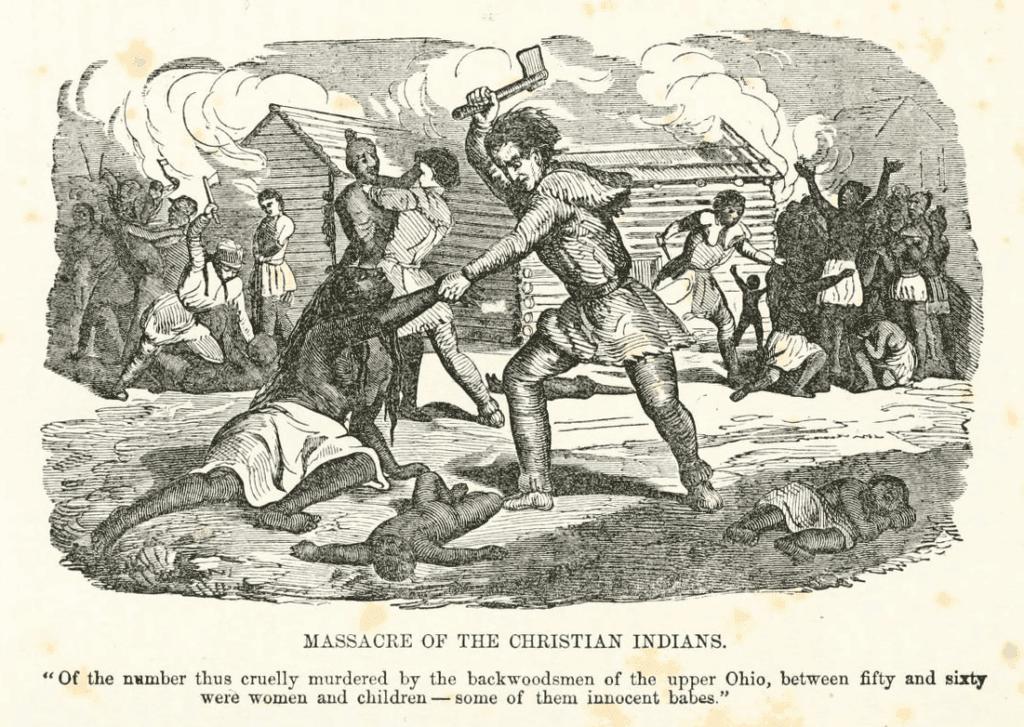
 THE MOST POWERFUL WOMAN IN EARLY TEXAS
THE MOST POWERFUL WOMAN IN EARLY TEXAS
Peach Point Plantation is a historic site located in Jones Creek, Brazoria County, Texas. The homestead and domicile of many early Texas settlers, including Emily Austin Perry, James Franklin Perry, William Joel Bryan, Stephen Fuller Austin, and Guy Morrison Bryan. The land was operated as a working forced-labor farm producing cotton and sugar cane from 1832 until 1863.
Stephen F. Austin‘s sister Emily (pictured) had two husbands. The first was James Bryan (1789–1822), an American mining entrepreneur whose efforts. Bryan operated “Bryan’s Mines” on Hazel Run, north of Big River, in 1806; this location is also known as “Hazel Run Lead Digging.”
Bryan owned significant land in Missouri, including a plantation, and donated land in the state to the public for the construction of public buildings. A transfer of Missouri land to Bryan from his father-in-law, mining entrepreneur Moses Austin, eventually became the subject of the 1885 United States Supreme Court case Bryan v. Kennett, which has been called the Court’s ratification of the Louisiana Purchase. Bryan was also a significant landowner in Arkansas and was recognized in a book published by the Arkansas History Commission.
Emily’s second husband was James Franklin Perry (1790–1853), an American who was an early settler of Texas. Together, they operated Peach Point Plantation. He was involved in the distribution of Texas land.
Stephen F. Austin was initially buried at the Gulf Prairie Cemetery (see picture below), also known as Gulph Prairie, near Peach Point.
Emily was eventually Austin’s sole heir and eventually became one of the largest Texas individual landholders and irrefutably the wealthiest woman in Texas. She was actively involved in managing the Austin estate, including investments and land, during a time when male signatures were still required on contracts and women did not have the right to vote.
Uniquely, in her lifetime, she was referred to or signed documents using 30 different variations of her name. She had a unique penmanship style. Her penmanship style, as evident in letters and writings, was condensed into a single typeface for word processing purposes. The Emily Austin font has been used in actual published literature.
Emily is also buried in Peach Point, and her headstone is below.

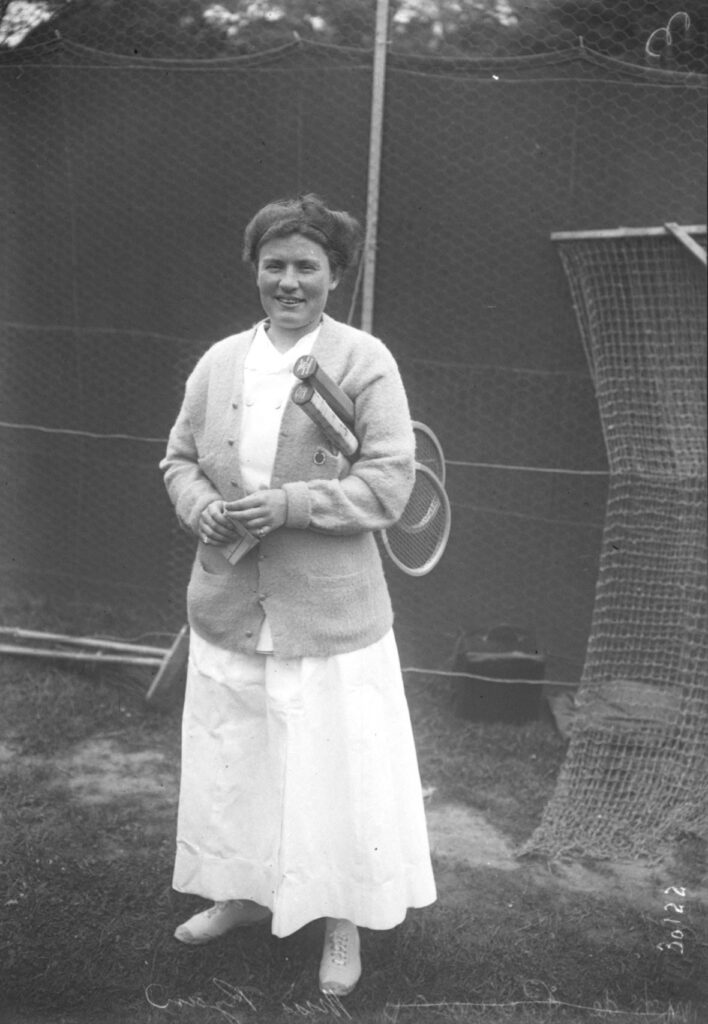
MORE ON THE J. ADDISON SMITH FAMILY’S DOINGS
Matilda Ryan’s daughter, Elizabeth Montague (Bunny) Ryan (pictured), was an American tennis star who specialized in doubles. She played several times with Mary Kendall Browne. Ryan won a combined total of 19 women’s doubles and mixed doubles titles at Wimbledon from 1914 through 1934. She held the record for most Wimbledon titles until 1979.
That year, Billie Jean King was attempting to win her 20th title. King was paired with Martina Navratilova in the women’s doubles–and Navratilova was almost unbeatable at that time. King’s 20th title was virtually assured–and this did not please 87-year-old Elizabeth Ryan one bit. Ryan constantly snubbed King whenever King tried to approach her. “She [King] is trying to steal my record,” Ryan told friends. When NBC’s Bud Collins tried to arrange an interview with King and Ryan together, Ryan staunchly refused. King and Navratilova did win the 1979 Wimbledon women’s doubles title on July 7–but Ryan was not around to see it. It was what can only be described as a timely death. Ryan collapsed on the Wimbledon grounds the day before and died.
 AUDOBON IN KEY WEST AND NATCHEZ
AUDOBON IN KEY WEST AND NATCHEZ
John James Audubon (1785–1851) (portrait below) was a French American self-taught artist, naturalist, and ornithologist. His combined interests in art and ornithology evolved into a plan to create a comprehensive pictorial record of all the bird species in North America. He was notable for his extensive studies, which documented all types of American birds, and for his detailed illustrations that depicted the birds in their natural habitats. His major work, a color-plate book titled The Birds of America (1827–1839), is considered one of the finest ornithological works ever completed. Audubon is also known for identifying 25 new species. He is the eponym of the National Audubon Society, and his name adorns a large number of towns, neighborhoods, and streets across the United States. Dozens of scientific names first published by Audubon are still in use by the scientific community.
We visited his home in Key West (below) and learned about his expeditions across North America, during which he documented and shared his findings. I came across this 1822 article above, which mentions that Audubon was conducting drawing classes for the ladies of early Natchez.
During a trip to Key West, a companion wrote in a newspaper article, “Mr. Audubon is the most enthusiastic and indefatigable man I ever knew … Mr. Audubon was neither dispirited by heat, fatigue, or bad luck … he rose every morning at 3 o’clock and went out … until 1 o’clock.” Then he would draw the rest of the day before returning to the field in the evening, a routine he kept up for weeks and months.

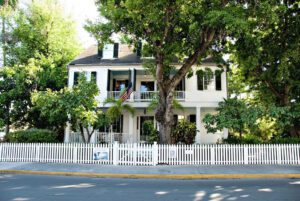
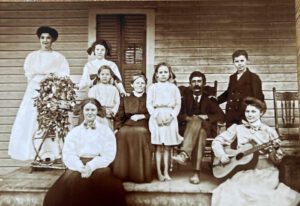 PRESERVE YOUR FAMILY HISTORY, TODAY
PRESERVE YOUR FAMILY HISTORY, TODAY
Reach out to Dancestors Genealogy. Our genealogists will research, discover, and preserve your family history. No one is getting any younger, and stories disappear from memory every year, eventually fading from our ability to find them.
Preserve your legacy and the heritage of your ancestors.
Paper gets thrown in the trash; books survive!
Ready to embark on your family history journey? Don’t hesitate. Call Dan Nelson and get your project started!


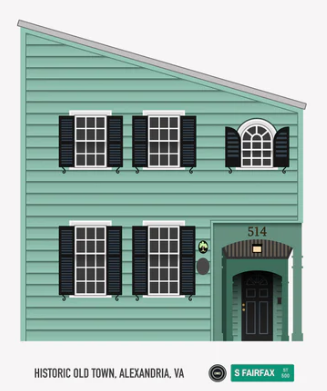 FROM EXTORTION TO WASHINGTON’S APPOINTMENT
FROM EXTORTION TO WASHINGTON’S APPOINTMENT TEDDY’S VISIT TO AFRICA
TEDDY’S VISIT TO AFRICA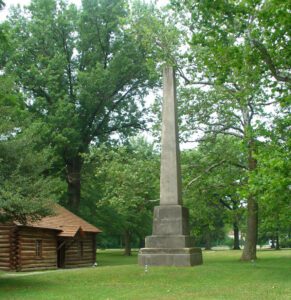 96 INNOCENTS SLAUGHTERED
96 INNOCENTS SLAUGHTERED THE MOST POWERFUL WOMAN IN EARLY TEXAS
THE MOST POWERFUL WOMAN IN EARLY TEXAS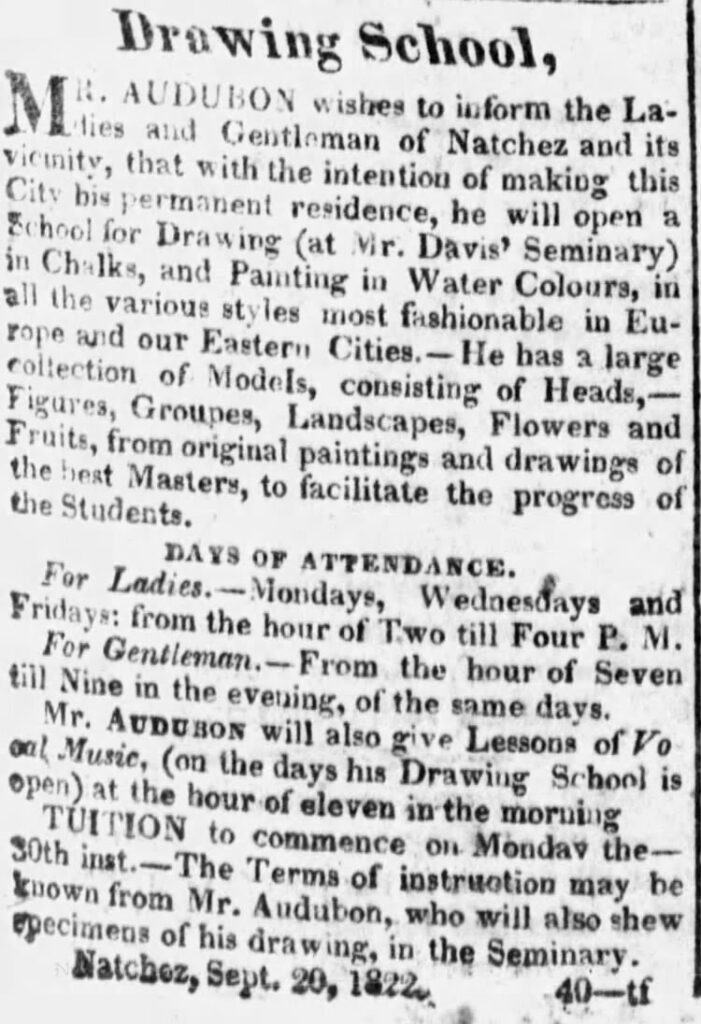 AUDOBON IN KEY WEST AND NATCHEZ
AUDOBON IN KEY WEST AND NATCHEZ